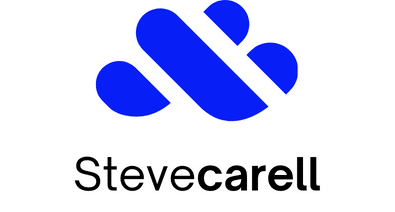How to Design Effective e-Learning Modules for Language Education in the UK?

As we continue to navigate the digital age, the face of education is changing rapidly. Traditional classrooms are becoming increasingly supplemented by online courses, transforming the educational experience into a more flexible and interactive journey. In this context, e-learning holds a particular relevance, especially in the field of language education. With innovative course designs and engaging materials, e-learning stands a step ahead in offering a holistic learning experience to students. This guide will walk you through the process of designing effective e-learning modules for language education in the UK by shedding light on the key factors that contribute to an enhanced online learning experience.
Understanding the Learner Profile
Before embarking on the course creation process, understanding your learner demographic is paramount. The content you create and the designs you implement should cater to the learners’ needs to facilitate an effective learning experience.
A voir aussi : How Can Real-Time Data Analytics Optimize Public Transportation in Major UK Cities?
Designing an online course is quite different from traditional classroom teaching. Students have different learning styles, and their preferences and comfort levels with digital tools may vary greatly. Therefore, creating an e-learning module is not just about digitising classroom content; it involves curating content that is engaging, interactive, and tailored to the learners’ needs.
When considering language education, cultural nuances and the learners’ familiarity with the language play a significant role. For instance, if you are designing a course for non-native English speakers in the UK, consider incorporating elements that will help them understand the cultural connotations associated with the language.
Lire également : Unlocking the mystery: what to expect from mystery boxes
Focusing on Course Content and Structure
The content and structure of your course directly impact its effectiveness. A well-structured course with engaging content can make a significant contribution to the students’ learning experience.
When crafting the content, focus on the learning outcomes you want your students to achieve. These learning outcomes will guide the structure of your course. For instance, if your course aims to improve the students’ English speaking skills, your content and activities should be designed around this goal.
Remember that online learning provides a unique opportunity for students to learn at their own pace. Therefore, the structure of your course should allow for self-paced learning. This could mean breaking down your course into smaller modules or lessons, each with its own learning outcomes.
Also, don’t forget to include formative assessments at regular intervals. These will help students gauge their understanding of the content and provide valuable feedback.
Incorporating Interactive Elements
Interaction is a key aspect of learning, especially in language education. Therefore, your e-learning module should be designed to facilitate interaction, both between the student and the content and among the students themselves.
In the context of online learning, interactive elements can take the form of multimedia content, quizzes, discussion forums, and more. For instance, you can include video and audio clips to demonstrate pronunciation and usage of language. Interactive quizzes and exercises will engage the students, promoting active learning.
Also, consider creating a platform for peer interaction. Encourage students to participate in online discussion forums or group activities. This will not only improve their language skills but also foster a sense of community among learners.
Leveraging Technology and Digital Tools
Technology plays a pivotal role in the design and delivery of e-learning modules. The right software and digital tools can enhance the overall learning experience, making it more engaging and effective.
There are a plethora of e-learning tools available today, each with its own set of features and functionalities. Some tools allow you to create interactive content, while others enable you to track students’ progress and performance. Depending on your course objectives and learner profile, choose the tools that best fit your needs.
Remember, the goal is not to use the most advanced technology but to leverage technology to facilitate learning. Therefore, your choice of tools should enhance the learning experience, not complicate it.
Ensuring Accessibility and Inclusivity
Finally, an effective e-learning course is one that is accessible to all learners, regardless of their physical abilities or technological prowess.
Accessibility and inclusivity are critical elements in course design. Use simple language and clear instructions to ensure that your content is comprehensible to all learners. Also, consider using subtitles or transcripts for audio and video content to aid learners with hearing impairments.
Furthermore, make sure your course is compatible with different devices and platforms. This will provide flexibility to the learners, allowing them to access the course anytime, anywhere.
In conclusion, designing an effective e-learning module for language education involves understanding your learners, creating engaging content, incorporating interactive elements, leveraging technology, and ensuring accessibility and inclusivity. With these considerations in mind, you are well on your way to creating a digital learning experience that is both enriching and effective.
Utilising Feedback for Continuous Improvement
Feedback is a critical element in the learning experience. It is not only important for students to understand where they stand in terms of their learning outcomes but also for instructors to evaluate the effectiveness of their e-learning course.
One of the advantages of online learning is the availability of instant feedback. Digital tools provide real-time data on students’ performance and engagement levels. For example, educators can track how long a student spends on a particular module, the number of attempts made on an exercise, and the progress made over time. This insightful data can be used to identify areas of improvement in the course design.
Moreover, encourage students to provide their feedback. Constructive criticism from the learners can shed light on any technical difficulties faced, the clarity of instructions provided, the relevance of the content, and the overall learning experience. Remember, this feedback is not just about pointing out the flaws but letting you understand what works best for your learners.
Therefore, make feedback an integral part of your course. Include surveys or feedback forms at regular intervals, and be open to suggestions. Utilise this feedback to refine the content, structure, and delivery of your course continually — thereby ensuring a better learning experience for future cohorts.
Celebrating Learning Milestones
In traditional classrooms, the smallest of achievements are often celebrated — be it a perfect test score, an insightful comment, or simply regular attendance. There’s no reason why these celebrations shouldn’t be a part of online learning.
Recognising and celebrating learning milestones can boost students’ motivation and engagement levels. This acknowledgement not only makes them feel valued but also reinforces positive learning behaviours. For instance, you can celebrate a student completing a challenging module, making a significant improvement in their language skills, or even regularly participating in discussion forums.
Digital badges, certificates, leaderboard scores, or simple congratulatory messages can be used to acknowledge these milestones. The celebration of these achievements doesn’t necessarily have to be grandiose; a simple recognition can make learners feel proud of their progress and motivate them to work harder.
In addition, creating a platform where learners can share their achievements with others can foster a sense of community. This platform can take the form of a virtual notice board, a weekly newsletter, or a discussion forum. Encouraging learners to celebrate each other’s achievements can support a positive and collaborative learning environment.
Conclusion
In an era where digital learning is becoming the norm, designing effective e-learning modules for language education in the UK involves a lot more than just digitising classroom content. It requires a thorough understanding of the learner profile, crafting content that aligns with the desired learning outcomes, and creating an engaging and interactive learning environment.
Leveraging technology and digital tools, ensuring accessibility and inclusivity, utilising feedback for continuous improvement, and celebrating learning milestones are also crucial elements in the learning design process.
With these factors in mind, educators can create e-learning courses that offer a holistic, engaging, and effective learning experience. The end goal is to equip learners with the language skills they need in a manner that is both enjoyable and rewarding for them. The journey may be challenging, but the reward – the ability to facilitate and witness the growth and development of your learners – is undoubtedly worth the effort.
